Page path:
- Home
- About us
- People
- Alumni
- Former Personnel
- Meador, Travis
Dr. Travis Meador
Archived PageThis web page has not been updated since the former colleague left MARUM. |
What it is that I do here: an elevator conversation
Firstly, can you appreciate the importance of plant life for the planet? ...Over centuries we have learned the relative importance and cultivation practices of many plant species: for crops, medicine, decoration, architecture, etc. Perhaps most importantly, plants on land and in the ocean are a natural sustenance that take carbon from the atmosphere, turn it into living biomass, and produce the oxygen that we breathe.
EQUALLY IMPORTANT as carbon assimilation by photosynthesis, is the removal of organic carbon via degradation of living biomass. Humans have also learned to benefit from this natural process; examples include composting, treating wastewater, and even brewing!
WE HAVE ONLY BEGUN to explore the many varieties of carbon degradation mechanisms on Earth. I am currently researching these and other capabilities of micro-organisms in marine sediments...
EQUALLY IMPORTANT as carbon assimilation by photosynthesis, is the removal of organic carbon via degradation of living biomass. Humans have also learned to benefit from this natural process; examples include composting, treating wastewater, and even brewing!
WE HAVE ONLY BEGUN to explore the many varieties of carbon degradation mechanisms on Earth. I am currently researching these and other capabilities of micro-organisms in marine sediments...
RESEARCH INTERESTS
- Organic Geochemistry
- Molecular Microbiology
- Biogeochemical Cycles

EDUCATION & EMPLOYMENT
| 2016-present | Research Associate | University of Bremen, MARUM Center for Marine Environmental Sciences | Bremen, Germany |
| 2010 - 2015 | Postdoctoral Investigator | University of Bremen, MARUM Center for Marine Environmental Sciences | Bremen, Germany |
| 2008-2010 | Postdoctoral Investigator | Woods Hole Oceanographic Institution | Woods Hole, MA, USA |
| 2008 | Postdoctoral Investigator | University of the Aegean | Mytilini, Greece |
| 2001-2008 | Ph.D. Oceanography | Univeristy of California, San Diego, Scripps Institution of Oceanography | La Jolla, CA, USA |
| 1997-2001 | B.S. Marine Sciences | University of South Carolina | Columbia, SC, USA |
CURRENT PROJECTS



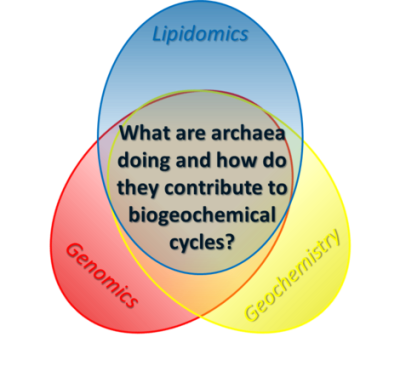
COMPLETED PROJECTS
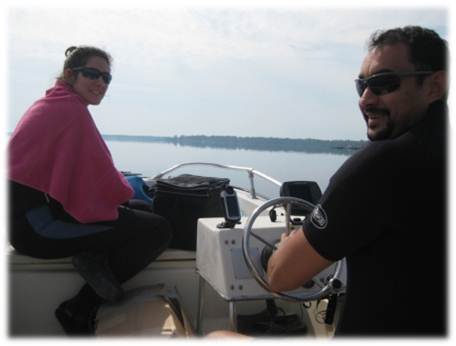
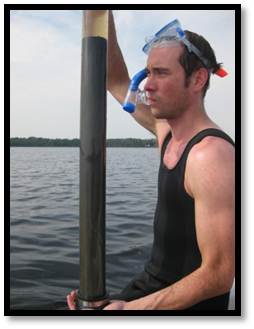
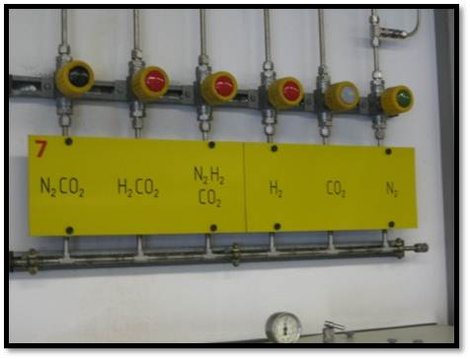


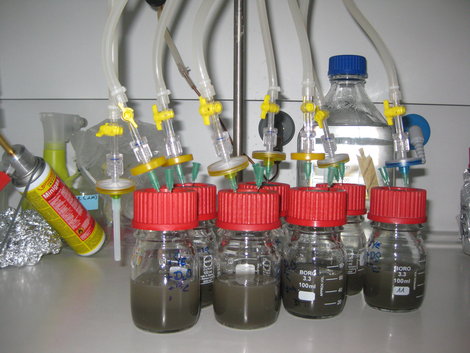
ONGOING RESEARCH THEMES

Dissolved organic matter (DOM) is a black box of organic molecules in both the logistical sense, that we vaguely understand how it cycles but do not know the underlying mechanisms that control this cycling, and in the aeronautical sense, that DOM records the molecular “conversations” of events that have transpired. Indeed, DOM is often depicted as a central component in marine food webs, having important ties to all domains of life and the global C cycle; however, the processes that control its distributions and fluxes remain poorly defined and further investigation of its composition and reactivity is necessary to resolve environmental phenomena and anthropogenic forcings.
PUBLICATIONS
* co-first author contribution
** publication with student
** publication with student
- Meador T.B., Goldenstein N.I., Gogou A., Herut B., Psarra S., Tsagaraki T.M. and Hinrichs K-U., (2017) Planktonic Lipidome Responses to Aeolian Dust Input in Low-Biomass Oligotrophic Marine Mesocosms. Frontiers in Marine Science 4(113). doi: 10.3389/fmars.2017.00113
- Huguet, A.*, Meador, T.B.*, Laggoun-Défarge, F., Könneke, M., Derenne, S., Hinrichs, K-U., (2017) Production rates of bacterial tetraether lipids and fatty acids in peatland under varying oxygen concentrations. Geochimica et Cosmochimica Acta 203, 103-116. doi: 10.1016/j.gca.2017.01.012
- B. Herut, E.Rahav, T. M. Tsagaraki, A. Giannakourou, A. Tsiola, S. Psarra, A. Lagaria,N. Papageorgiou, N. Mihalopoulos, C.N. Theodosi, E. Stathopoulou, M. Scoullos,M.D. Krom, A. Stockdale, Z. Shi,I. Berman-Frank, T.B. Meador, T. Tanaka, C. Shun-Yan, K. Violaki, G. Cui, H. Liu, P. Pitta, (2016) The potential impact of Saharan dust and polluted aerosols on microbial populations in the East Mediterranean Sea, an overview of a mesocosm experimental approach. Frontiers in Marine Science 3,226. doi: 10.3389/fmars.2016.00226
- Yoshinaga, M.Y., Gagen, E.J., Wörmer, L., Broda N.K., Meador, T.B., Wendt, J., Thomm, M., Hinrichs, K-U., (2015) Methanothermobacter thermautotrophicus modulates its membrane lipids in response to hydrogen and nutrient variability. Frontiers in Microbiology, doi: 10.3389/fmicb.2015.00005
- Meador, T.B., Bowles, M., Lazar, C., Zhu, C., Teske, A., Hinrichs, K-U., (2015) The archaeal lipidome in estuarine sediment dominated by members of the Miscellaneous Crenarchaeotal Group. Environmental Microbiology, doi: 10.1111/1462-2920.12716
- Lazar, C.S., Biddle, J.F., Meador, T.B., Blair, N., Hinrichs, K-U., Teske, A.P., (2015) Environmental controls on intragroup diversity of the uncultured benthic archaea of the Miscellaneous Crenarchaeotal Group lineage naturally enriched in anoxic sediments of the White Oak River Estuary (North Carolina, USA). Environmental Microbiology, doi: 10.1111/1462-2920.12659
- Meador, T.B. and L.I. Aluwihare, (2014) Biological production in the Amazon River plume imparts compositional changes to ultrafiltered dissolved organic matter. Global Biogeochemical Cycles, doi: 10.1002/2013GB004778
- Meador, T.B., Gagen, E.J., Loscar, M.E.**, Goldhammer, T., Yoshinaga, M.Y., Wendt, J., Zabel, M., Thomm, M., Hinrichs, K-U., (2014) Thermococcus kodakarensis modulates its polar membrane lipids and elemental composition according to growth stage and phosphate availability. Frontiers in Microbiology, 5, 10. doi: 10.3389/fmicb.2014.00010
- Meador, T.B., Zhu, C., Elling, F., Könneke, M., Hinrichs, K-U., (2014) Identification of isoprenoidal glycosidic glycerol dibiphytanol diethers and indications for their biosynthetic origin. Organic Geochemistry, 69, 70-75. doi: 10.1016/j.orggeochem.2014.02.00
- Zhu, C., Meador, T.B., Dummann, W., Hinrichs, K-U., (2014) Identification of unusual butanetriol dialkyl glycerol tetraether and pentanetriol dialkyl glycerol tetraether lipids in marine sediments. Rapid Communications in Mass Spectrometry 28, 332-338. doi: 10.1002/rcm.6792
- Zhu, R.*, Lin, Y.-S., Lipp, J.S., Meador, T.B., and Hinrichs, K.-U., (2014) Optimizing sample pretreatment for compound-specific stable carbon isotopic analysis of amino sugars in marine sediment. Biogeosciences 11, 4869-4880. doi:10.5194/bg-11-4869-2014
- Gagen, E. J., Huber, H., Meador, T., Hinrichs, K.-U., Thomm, M., (2013) Novel Cultivation-Based Approach To Understanding the Miscellaneous Crenarchaeotic Group (MCG) Archaea from Sedimentary Ecosystems. Applied and Environmental Microbiology, 79, 6400-6406. doi: 10.1128/aem.02153-13
- Jones, V., Meador, T.B., Gogou, A., Migon, C., Penkman, K.E.H., Collins, M.J., Repeta, D.J., (2013) Characterisation and dynamics of dissolved organic matter in the Northwestern Mediterranean Sea. Progress in Oceanography. doi: 10.1016/j.pocean.2013.06.007
- Meador, T.B.; Gogou, A.; Spyres, G.; Herndl, G.J.; Krasakopoulou, E.; Psarra, S.; Yokokawa, T.; De Corte, D.; Zervakis, V.; Repeta, D., (2010) Biogeochemical relationships between ultrafiltered dissolved organic matter and picoplankton activity in the Eastern Mediterranean Sea. Deep Sea Research II 57, 1460-1477. doi: 10.1016/j.dsr2.2010.02.015
- Frangoulis, C.; Psarra, S.; Zervakis, V.; Meador, T. ; Mara, P.; Gogou, A.; et al., (2010) Connecting plankton food web functioning and biogeochemical cycles in the Mediterranean area affected by the Black Sea water inflow. Journal of Plankton Research 32, 1203-1216. doi: 10.1093/plankt/fbq010
- Aluwihare, L.I. and T.B. Meador, (2008) Chemical composition of marine dissolved organic nitrogen. In Nitrogen in the Marine Environment, 2nd Edition, edited by Capone, D.G.; Bronk, D.A.; Mulholland, M.R.; Carpenter, E.J., Elsevier, San Diego. doi: 10.1016/B978-0-12-372522-6.00003-7
- Meador, T.B.; Aluwihare, L.I.; and Mahaffey, C., (2007) Isotopic heterogeneity and cycling of components of the dissolved organic nitrogen pool in the oligotrophic ocean. Limnology and Oceanography 52(3), 934-947. doi: 10.4319/lo.2007.52.3.0934


